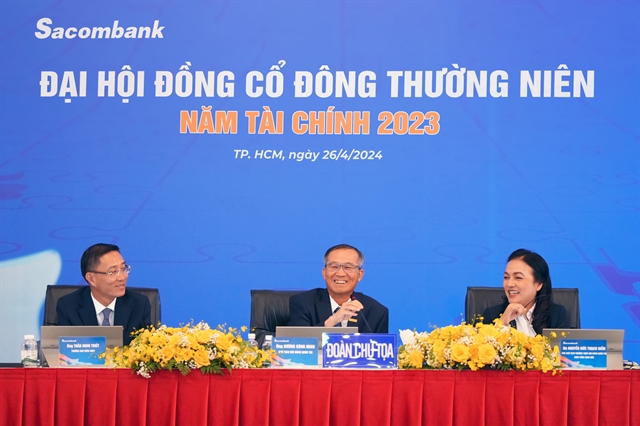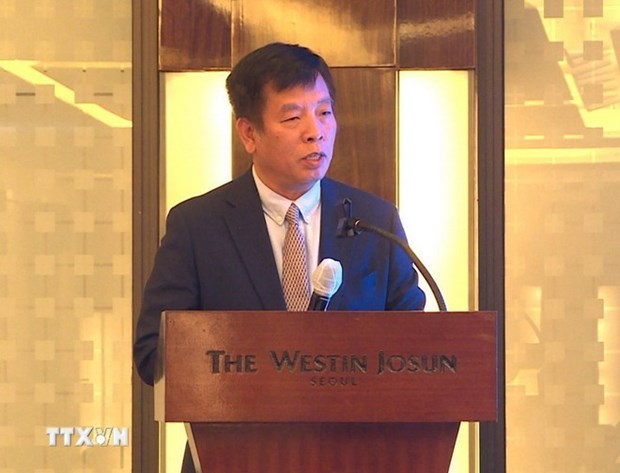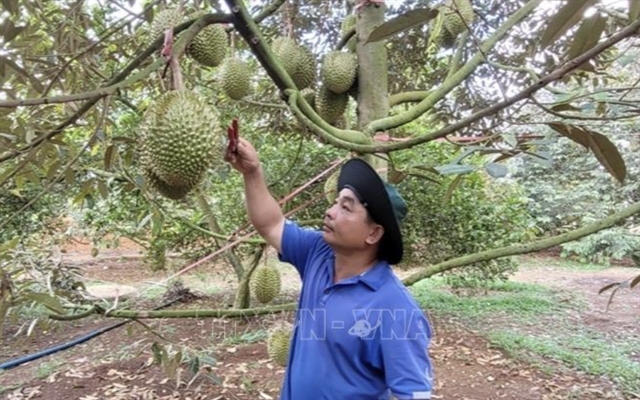 Economy
Economy

Labels must be displayed directly on goods or their commercial packaging in easy-to-spot positions, clearly and fully showing compulsory information about the item.
 |
| A market watch team discovers a batch of fake goods in the capital city. — Photo VNA |
HÀ NỘI — Labels must be displayed directly on goods or their commercial packaging in easy-to-spot positions, clearly and fully showing compulsory information about the item.
This is the thrust of Government Decree No 43/2017/NĐ-CP on labeling of Vietnamese and imported goods, which came into effect on June 1.
Under the decree, a label’s compulsory information must include the name of the goods, name and address of the organisation or individual responsible for the goods, origin of the goods and other information depending on the characteristics of the goods.
Accordingly, organisations and individuals responsible for the labeling are required to present the information truthfully, clearly and precisely. In case such organisations or individuals authorise others to label their goods, the former will continue to remain responsible for following labeling regulations.
The new decree also requires goods imported into Việt Nam, which have original labels that are noncompliant with this decree or lack certain prescribed compulsory information, to have extra labels in Vietnamese enclosed with the original ones.
With these new regulations, the decree has created legal corridors to prevent vague labeling.
According to the Hà Nội Industry and Trade Department, lack of production date and place, and vague and inaccurate labeling are popular ways to swindle customers in the Vietnamese market.
It is easy to catch violations, including labels of the wrong size or incorrect font size of letters, in addition to many types of imported goods not having an extra label.
As a result, many production establishments have taken advantage of this situation to sell fake products. The violations have mainly been found in food items, clothing and electronic products.
Phạm Văn Thành, a resident of Hà Nội’s Ba Đình District, said he bought a gas stove labeled “Rinai – Japan’s leading brand name gas stove” at a trade centre in the capital city and supposed that it had been produced in Japan. When he returned home, he discovered “Made in China” printed below the stove.
An online home appliances shopkeeper in Hà Nội, said: "There are Rinai stoves made in Japan, made in Việt Nam, and made in China in the Vietnamese market at different prices. The customers should study this carefully before making a decision to buy one."
He gave the Napolis gas stove imported from Italy as an example. The stove is being sold for more than VNĐ6 million (US$263.5) but there is another stove named Napoli whose label is similar to the Italian one which is priced at VNĐ3 million. This stove is made in China.
Trần Việt Hùng, deputy head of the Hà Nội Market Watch Department, said all goods in the market must be properly labelled. Goods with vague labels were often found to be fake or counterfeit.
“The new regulations will serve as a deterrent and strictly penalise violations on labeling and stamps,” Hùng said. — VNS









